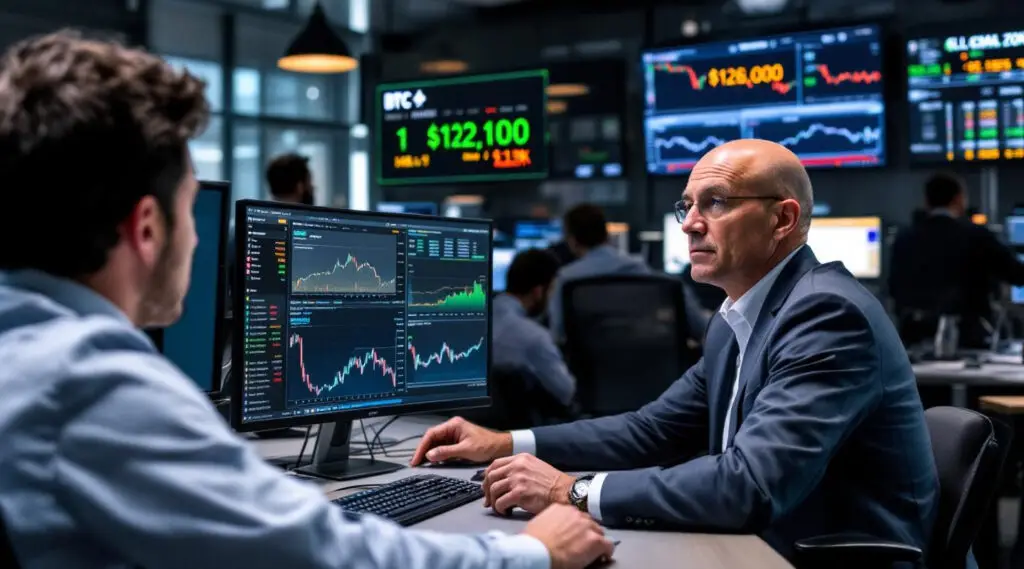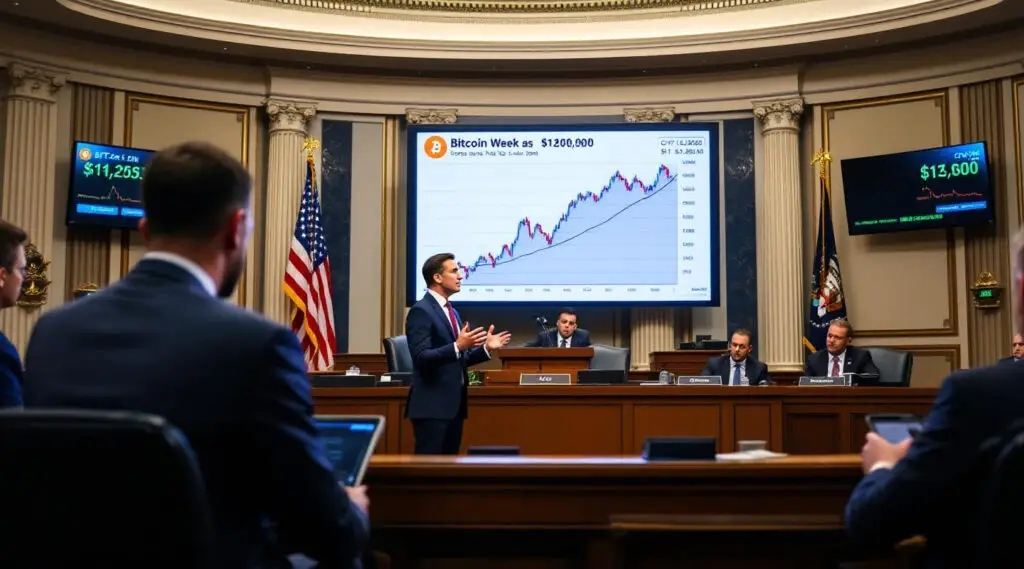Bitcoin’s Record Ascent Amidst Favourable Macroeconomic Conditions
Bitcoin, the world’s largest cryptocurrency by market capitalisation, is continuing its remarkable ascent into unexplored price territory, driven by a convergence of significant macroeconomic and fiscal policies. The digital asset swelled to a record $121,800 on Sunday, according to CoinGecko data. This record-breaking rally is not merely a product of market exuberance but is underpinned by structural strengths and specific economic forces. Analysts are increasingly pointing to a unique “Goldilocks-like equilibrium” within the U.S. economy, where contained inflation and robust growth are creating an exceptionally favourable environment for risk assets, with Bitcoin leading the charge.
Tariff-Driven Trade Flows Fueling Bitcoin’s Rally
One of the primary forces contributing to Bitcoin’s current rally is the impact of President Donald Trump’s tariffs. Singapore firm QCP Capital, in its latest market note, attributed Bitcoin’s milestone to both “exuberance and structural strength,” highlighting Trump-era tariffs as a key driver. This phenomenon, described as “just-in-case financing,” sees global supply chains frontloading imports and production in anticipation of impending U.S. tariffs. This proactive behaviour has ignited trade credit expansion and manufacturing growth, even amidst policy uncertainty. The resulting economic activity and capital flows are creating a tailwind for Bitcoin, as investors seek assets that can benefit from or hedge against these unique trade dynamics.
High Treasury Payouts and Fiscal Flows
The second significant aspect fueling Bitcoin’s ascent is the impact of elevated Federal Reserve Funds Rates and soaring Treasury interest payments. These substantial payouts are being recycled into corporate and household balance sheets across the U.S. This influx of liquidity into the economy provides additional capital that can be allocated to various asset classes, including cryptocurrencies. When combined with the tariff-driven trade flows, these fiscal dynamics contribute to the “Goldilocks-like equilibrium” that QCP Capital identifies. This environment, characterised by contained inflation and robust economic growth, makes risk assets, including Bitcoin, particularly attractive to investors seeking higher returns in a seemingly stable yet expansive economic climate.
Renewed Risk-On Sentiment in the Market
Bitcoin’s repeated all-time highs come at a time when market participants are pivoting towards a “risk-on” sentiment. This shift follows earlier caution in the year, which was sparked by uncertainty surrounding U.S. trade policy. The renewed optimism is further fueled by expectations of U.S. interest rate cuts in 2025. Ryan Lee, an analyst at Bitget Research, noted that these expectations have “fueled a risk-on sentiment, supporting Bitcoin’s rally as a hedge against inflation.” This environment encourages investors to move capital into assets perceived to have higher growth potential, as opposed to safer, lower-yielding options. The confluence of a strong economy, contained inflation, and anticipated rate cuts creates a highly favourable backdrop for risk assets in general, with crypto being a prime beneficiary.
Institutional Participation and Regulatory Developments
The current Bitcoin rally is also being significantly bolstered by growing institutional participation and favourable regulatory developments in the U.S. As of July 14, both spot Bitcoin and Ethereum ETFs have attracted substantial inflows, with Bitcoin ETFs drawing $3.39 billion and Ethereum ETFs attracting $1.10 billion. These consistent capital inflows into exchange-traded funds indicate a deepening institutional embrace of cryptocurrencies.
Steve Gregory, advisor to crypto exchange vTrader, highlighted a “surge in demand for $130,000 strike price Bitcoin calls,” signalling strong positioning for further upside among professional traders. Kelvin Koh, co-founder and CIO of Spartan Group, emphasised that the environment is favourable for crypto due to “favourable regulatory developments in the U.S., ongoing buying from treasury companies, which continues to grow in numbers by the day and growing institutional participation.”
Bitcoin’s Maturation and Future Price Trajectory
As Bitcoin continues to mature, experts suggest that its volatility may decrease, potentially leading to slower but more sustainable climbs compared to previous cycles. This is because, as the asset matures, sophisticated traders are making more intelligent bets, leading to a more stable growth pattern. However, the current $120,000 level breakout may just be the prologue to Bitcoin’s rally, especially with ongoing Treasury payments and persistent tariff uncertainty acting as significant tailwinds. Analysts speaking to Decrypt believe that sustained capital inflows into ETFs and a substantial uptick in open interest for derivatives could allow Bitcoin to continue grinding higher, potentially extending its rally well beyond current levels.
The Broader Economic Environment and Crypto’s Role
The U.S. economy’s “Goldilocks-like equilibrium,” characterised by robust growth and generally well-contained inflation, despite some tariff-induced upward pressure, creates an ideal setting for Bitcoin and other risk assets. This economic stability, combined with the anticipation of future interest rate cuts, reinforces the appeal of cryptocurrencies as both investment vehicles and potential hedges. The convergence of these macroeconomic factors with the inherent benefits of the crypto market, such as decentralisation and increasing institutional acceptance, positions Bitcoin for continued strength. As the digital economy evolves, Bitcoin’s role as a significant financial asset within this favourable economic climate is becoming increasingly undeniable.























